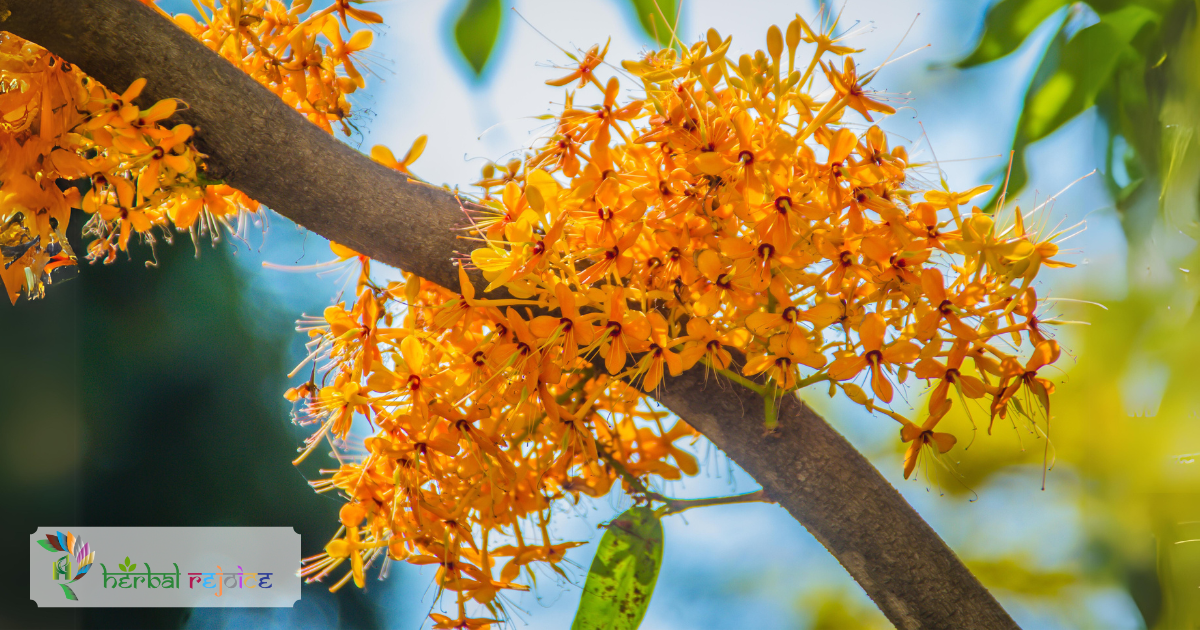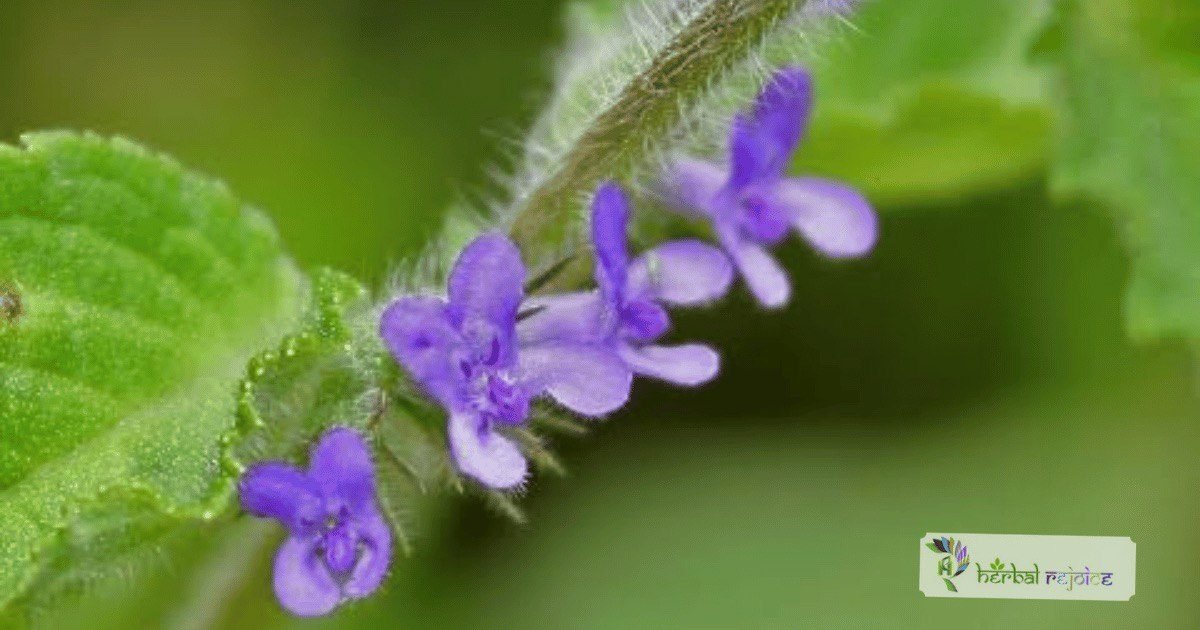Introduction To Ashoka
Saraca asoca, commonly known as Ashoka tree, is a plant species belonging to the Caesalpiniaceae family. It is found throughout India, except in Northwestern India, and thrives in habitats up to 750 meters in elevation.
Ashoka(Saraca asoka), is useful for managing several skin conditions, inflammation, menstrual problems, antipyretic properties, and management of digestive issues.
However, it is important to note that Polyalthia longifolia Benth. & Hook. f., an ornamental roadside tree, is often incorrectly referred to as Ashoka.
Ashoka : A Promising Future

Habitat and Other Names
In Unani medicine, the Ashoka tree is also known as Ashoka, and in Siddha/Tamil medicine, it is referred to as Asogam. The bark of the Ashoka tree is particularly valued for its uterine tonic properties, which helps maintain a healthy uterus. I
t is used in the treatment of conditions such as suppressed menses, leucorrhoea, menstrual pain, menorrhagia, and complaints of menopause. Additionally, the bark is used to treat dyspepsia, biliousness, colic, and burning sensation.
The flowers of the Ashoka tree, when pounded and mixed with water, are used to alleviate haemorrhagic dysentery, bleeding piles, and retention of urine.
Chemical Constituents Of Ashoka
According to The Ayurvedic Pharmacopoeia of India, the bark of the Ashoka tree is recommended for the treatment of metrohhagia, menorrhagia, chronic lymphadenitis, and inflammations.
The flowers of the tree contain various compounds such as fatty acids, gallic acid, apigenin-7-O-betaD-glucoside, cyanidin-3,5-diglucoside, kaempferol 3-O-beta-D-glucoside, pelargonidin-3,5-diglucoside, quercetin, and its 3-O-beta-D-glucoside and sitosterol.
The bark of the Ashoka tree is known to contain alkanes, esters, and primary alcohols.
It has been found to contain compounds such as n-octacosanol, tannins (6%), catechin, (+)-catechol, (−)-epicatechin, (−)-epicatechol, leucocyanidin, leucopelargonidin, procyanidin derivatives, and methyl- and ethylcholesterol derivatives.
Leaves and stems of the tree have been found to contain compounds like quercetin and its 3-O-rhamnoside, kaempferol-3-O-alpha-L-rhamnoside, amyrin, ceryl alcohol, and beta-sitosterol.
The alcoholic extract of the bark has shown antimicrobial activity against a wide range of bacteria. Additionally, the aqueous extract of the tree has been found to enhance the lifespan of mice infected with Ehrlich ascites carcinoma by 24%.
One particular compound isolated from the stem bark of the Ashoka tree, known as pure phenolic glucoside (P2), has exhibited highly potent oxytocic activity on different mammals.
Dosage
Its nature is similar to pitocin and ergometrine, which are commonly used to induce labor. The recommended dosage for dried stem bark is 20-30 grams for decoction.
Conclusion
In conclusion, the Ashoka tree (Saraca asoca) is a valuable plant in traditional medicine, particularly in Ayurveda, Unani, and Siddha/Tamil medicine. Its bark and flowers are used to treat various gynecological disorders and other ailments.
The tree contains several bioactive compounds that exhibit antimicrobial and medicinal properties. However, it is important to note that the Polyalthia longifolia Benth. & Hook. f. tree should not be confused with the Ashoka tree.
Frequently asked questions(FAQs)
What is the scientific name of the Ashoka tree?
The scientific name of the Ashoka tree is Saraca asoca.
What family does the Ashoka tree belong to?
The Ashoka tree belongs to the Caesalpiniaceae family.
Where is the Ashoka tree commonly found in India?
The Ashoka tree is found throughout India, except in Northwestern India.
Up to what elevation does the Ashoka tree thrive in?
The Ashoka tree thrives in habitats up to 750 meters in elevation.
What are some other names for the Ashoka tree?
The Ashoka tree is also known by names such as Ashoka, Ashoku, Hempushpa, Taamrapallava, Pindapushpa, and Gandhapushpa.
What is the importance of the Ashoka tree in Ayurvedic medicine?
The Ashoka tree has various uses in Ayurvedic medicine, particularly for its uterine tonic properties.
What conditions can the bark of the Ashoka tree treat?
The bark of the Ashoka tree is used to treat conditions such as suppressed menses, leucorrhoea, menstrual pain, menorrhagia, and complaints of menopause.
What are the uses of the Ashoka tree in Unani medicine?
In Unani medicine, the Ashoka tree is used for similar purposes as in Ayurvedic medicine, particularly for its uterine tonic properties.
What are the medicinal uses of the flowers of the Ashoka tree?
The flowers of the Ashoka tree, when pounded and mixed with water, are used to alleviate haemorrhagic dysentery, bleeding piles, and retention of urine.
What is the recommended dosage for the dried stem bark of the Ashoka tree?
The recommended dosage for dried stem bark is 20-30 grams for decoction.
What are some of the compounds found in the bark of the Ashoka tree?
The bark of the Ashoka tree contains compounds such as alkanes, esters, primary alcohols, n-octacosanol, tannins, catechin, (+)-catechol, (−)-epicatechin, (−)-epicatechol, leucocyanidin, leucopelargonidin, procyanidin derivatives, and methyl- and ethylcholesterol derivatives.
What compounds are found in the leaves and stems of the Ashoka tree?
The leaves and stems of the Ashoka tree contain compounds like quercetin and its 3-O-rhamnoside, kaempferol-3-O-alpha-L-rhamnoside, amyrin, ceryl alcohol, and beta-sitosterol.
What is the antimicrobial activity of the alcoholic extract of the bark?
The alcoholic extract of the bark has shown antimicrobial activity against a wide range of bacteria.
How does the aqueous extract of the Ashoka tree impact lifespan?
The aqueous extract of the Ashoka tree has been found to enhance the lifespan of mice infected with Ehrlich ascites carcinoma by 24%.
What is the botanical name of the tree that is often confused with the Ashoka tree?
The tree that is often confused with the Ashoka tree is Polyalthia longifolia Benth. & Hook. f.
Can the Ashoka tree induce labor?
One compound isolated from the stem bark of the Ashoka tree, pure phenolic glucoside (P2), has exhibited highly potent oxytocic activity on different mammals, similar to pitocin and ergometrine, which are commonly used to induce labor.
What are the gynecological disorders that can be treated with the Ashoka tree?
The Ashoka tree’s bark and flowers are used to treat gynecological disorders.





